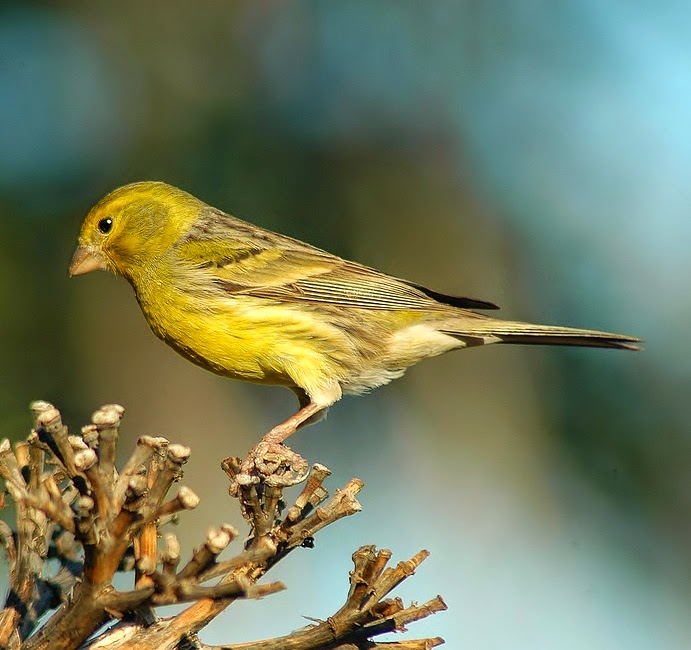 |
| (Photo from Flickr) |
Common name:
island canary (en); canário-da-terra (pt); serin des Canaries (fr); canario silvestre (es); kanarengirlitz (de)
Taxonomy:
Order Passeriformes
Family Fringillidae
Range:
This species is native of the north-eastern Atlantic archipelagos of Madeira, Azores and the Canary islands. It has also been introduced to Bermuda, Puerto Rico and the Hawaiian Islands, and the domestic form is a popular cage bird worldwide.
Size:
These birds are 12,5-13,5 cm long and have a wingspan of 23 cm. They weigh 15-25 g.
Habitat:
The island canary is found in a variety of habitats, including dry scrublands, laurel forests, pine forests, open woodlands, pastures, arable land, orchards and rural gardens. They are present from sea level up to an altitude of 1.700 m.
Diet:
They forage mainly on the ground, taking the seeds of various grasses and weeds, but also eat fig seeds and the buds of leaves and flowers. During the breeding season the diet may be complemented with insects.
Breeding:
Island canaries breed in January-June. The nest is built by the female while the male defends the territory. The nest is an open cup made of grasses, roots and moss and lined with hair and feathers. It is placed high up in a thick scrub or tree. The female lays 3-5 pale blue-green eggs with reddish-brown spots, which she incubates alone for 13-14 days. The chicks are fed by both parents and fledge 14-17 days after hatching, but only become fully independent some 3 weeks later. They become sexually mature at 3-4 months of age. Each pair raises 1-2 broods per year.
Conservation:
IUCN status – LC (Least Concern)
This species has a relatively large breeding range and the global population is estimated at 60.000-300.000 individuals. The population is suspected to be stable in the absence of evidence for any declines or substantial threats.







